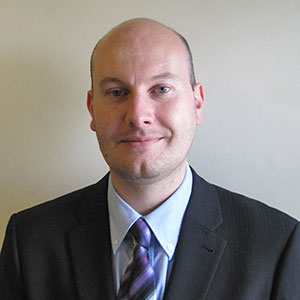Biography
Dr Mark Skidmore was appointed as Lecturer in Biochemistry at Keele in October 2010, having spent 4 years as Research Associate at Liverpool University, where he had previously completed his PhD in 2006 on “Heparin / heparan sulphate method development and protein interactions” under the supervision of Prof JE Turnbull and Dr EA Yates.
His first degree and diploma in Biochemistry were at Imperial College London, and he has built up a range of links across academic collaborations and industrial partnerships.
Research and scholarship
The general area of Dr Skidmore’s research interests is carbohydrate chemistry/biochemistry, in particular the role of anionic carbohydrates (for example the glysoaminoglycans (GAGs) as dynamic cell regulators.
The major focus of his current research is the study of carbohydrate:protein structure-functions, in particular the development of new tools and technologies for elucidating protein-carbohydrate interactions and their application to biomedical sciences, biological sciences and medicine.
Publications
Funding
Dr Skidmore’s current research grants include:
- Principal applicant and student supervisor: “Novel glycotherapeutics for Alzheimer's disease”. (Co-Is: Prof S Allin, Dr EA Yates, Dr MJ McKenzie, Dr P Horrocks) Medical Research Council industrial CASE studentship MR/J012246/1 with Charnwood Molecular Ltd, £109,288
- Co-applicant and co-author: “Novel semi-synthetic carbohydrates as potential therapeutics for severe malaria” (PI: Dr EA Yates) Medical Research Council £554,479
- Co-applicant and co-author: “Chemically modified low molecular weight heparins as potent disruptors of rosetting in severe malaria”. (PI: Dr EA Yates) Wellcome £59,769
- Collaborator : “Investigation into Plasmodium falciparum rosetting mechanisms and development of rosette-disrupting interventions to treat or prevent severe malaria”. PI Alex Rowe – Wellcome Trust Senior Research Fellowship.
School of Life Sciences,
Huxley Building,
Keele University,
Staffordshire,
ST5 5BG
Tel: +44 (0) 1782 734414
Enquiries:
Tel: +44 (0) 1782 734414
Email: lifesciences.office@keele.ac.uk


